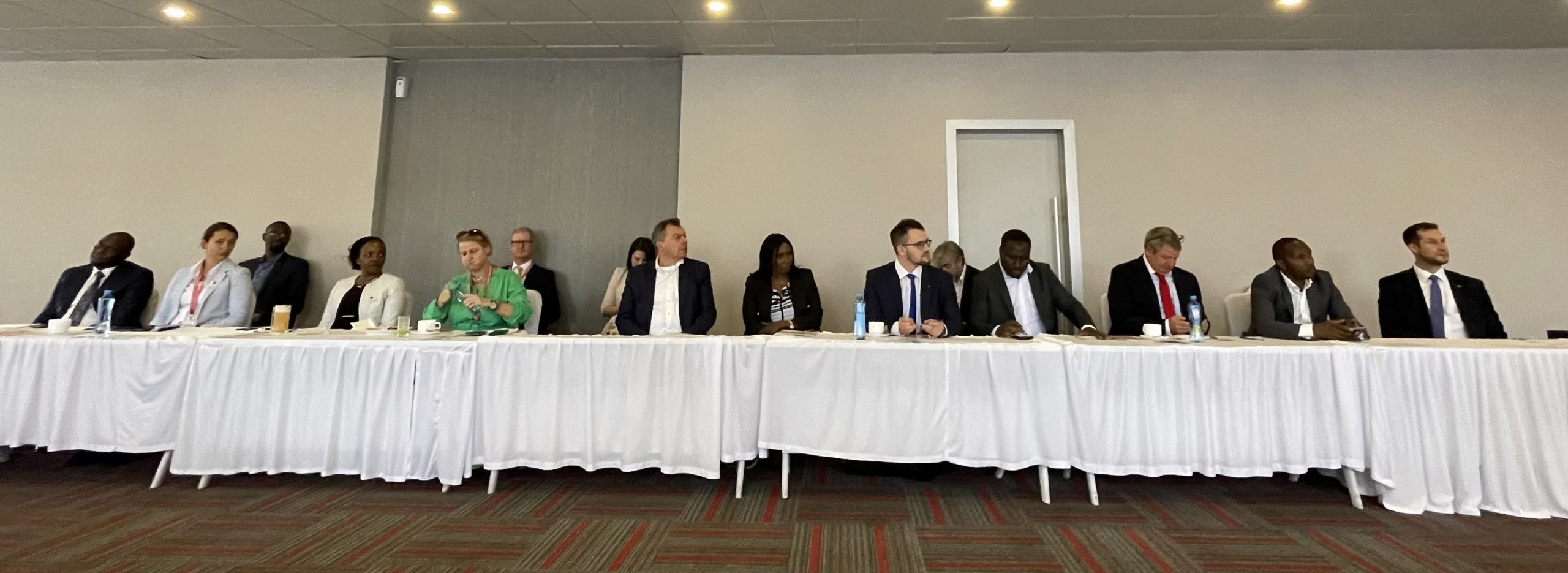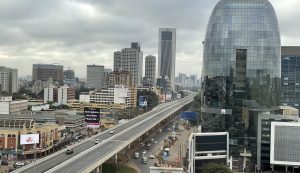HANS STOISSER
Migration – a Christmas story

Vienna, 2053. The head of communications at Mariahilf Hospital tells the story of her ancestors. In the mid-2020s, an increased influx of Kenyans to Austria began. The governments of both countries had signed an agreement on the migration of skilled labour. Her grandparents were there, her grandfather was a software developer, and her grandmother was a nurse. Both already had work contracts in their pockets when they arrived in Austria.
Well over a quarter of people living in Austria and Germany now have an African migration background. Since 2030, Nigeria, Kenya and Tanzania have been the most important countries of origin, replacing Romania, Serbia and Turkey.
The wave of immigration of African skilled workers was the result of an abrupt policy change in Europe. In 2024, as more and more young men from the Arab world and African countries poured into Europe and irregular migration reached a new peak, the Russian government capitalised on the situation in its hybrid warfare against the West. To destabilise the countries of the European Union, it flew thousands of people from the Sahel to Minsk. It brought them from there to the borders with Lithuania, Latvia, Estonia and Finland.
As a result, political chaos broke out in the European Union. After Italy and Holland, a xenophobic right-wing party also came to power in Austria and appointed the Federal Chancellor. Under the pressure of these events, ideological divisions were finally overcome at European level.
Two measures brought about the turnaround: The immediate transport of irregular arrivals to certain countries outside the European Union. And generous bilateral agreements with over thirty African countries for the influx of African skilled labour to Europe.
Education boom in Africa
The relocation of asylum procedures out of Europe had reduced irregular migration by over ninety per cent in one stroke. This was because the possibility of staying permanently in Europe after arrival, which seemed a certainty to immigrants, had suddenly disappeared. The regained control over who enters European countries finally reassured people in Europe and the triumph of xenophobic right-wing parties came to an end.
Above all, the agreements on skilled labour migration with African states brought great benefits to countries on both continents: African governments were suddenly able to offer jobs in Europe to the many young people in their countries and the ageing European economy was once again able to access young skilled labour.
During this time, the foundations were laid for a unique boom in the training industry on the African continent. From nurses to car mechanics, from tourism specialists to AI experts. The aspirations of millions of young Africans for a better life were catered for with training programmes instead of human trafficking services.
And it is no coincidence that a particularly large number of Africans are now working in the healthcare and tourism sectors. This is because relationship-orientation and communication skills are among the strengths of African cultures.
Resurgence of the liberal society
The resolution of conflicting interests in the migration issue also led to stronger ties between African and European countries. Together with the subsequent high economic growth rates in Africa, this created an intellectual climate in which the values of liberal societies were suddenly appreciated again. Terms such as freedom or democracy suddenly had a positive connotation again.
With this paradigm shift in the “world of ideas”, the influence of the authoritarian governments that gained strength in the 2020s could finally be pushed back around the world.
The future is open
So much for the Christmas story.
Today, at the end of 2023, completely different scenarios seem possible and perhaps even more likely. For example, one is described by Michel Houellebecq in his novel “The Submission”. A French Islamic society that takes the step back to a renewed connection between the state and religion. A rejection of the Enlightenment and freedom of citizens in the age of digital surveillance. In addition, there may be an authoritarian China as a superpower at global level, supported by a militarised Russia as the world’s policeman.
Facts
What happens next in Europe and the world will also depend on us. We should better start from the current realities:
- The median age of the population is 44 years in Europe and 19 years in Africa.
- In 1950, Europe accounted for almost a quarter of the world’s population (21.7%), today it is less than 10%, and in 2050 it will be 7%.
- In 1950, 230 million people lived in Africa, 9 per cent of the world’s population. Today there are just under 1.4 billion (17%) and by 2050 there will be 2.4 billion (25%).
And it should be clear to us that …
- … people from African countries are not pushing their way to Europe because they are getting worse and poorer. On the contrary, it is because many have the opportunity to try their fortune elsewhere for the first time! Although more and more people are emerging from absolute poverty, the huge differences in prosperity will remain for a long time to come and will become ever more noticeable in an increasingly interconnected world.
- … more and more African governments are pursuing policies that aim to create jobs abroad for their young people. For example, the current Kenyan government is looking for skilled labour for one million Kenyans in countries with higher incomes.
- … the current asylum crisis in Europe is discouraging serious and well-educated Africans from seeking work in Europe (according to African diplomats).
- … readmission agreements with African governments will only be possible if Europe has something to offer, e.g. good and sustainable jobs for young Africans.
I wish you all a Merry Christmas and hope some of the Christmas stories we have made up ourselves come true!



